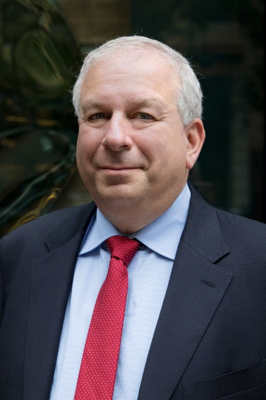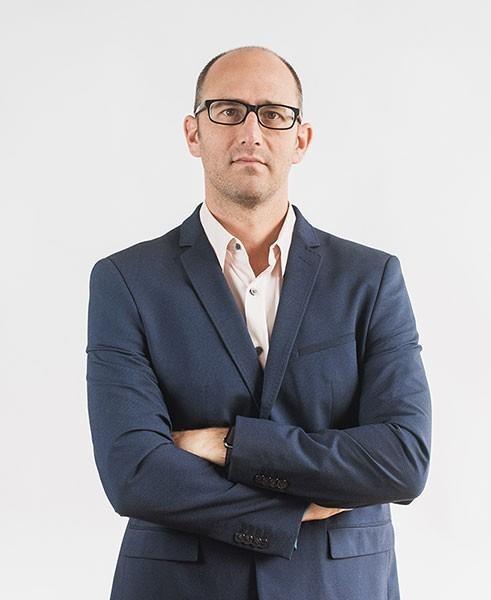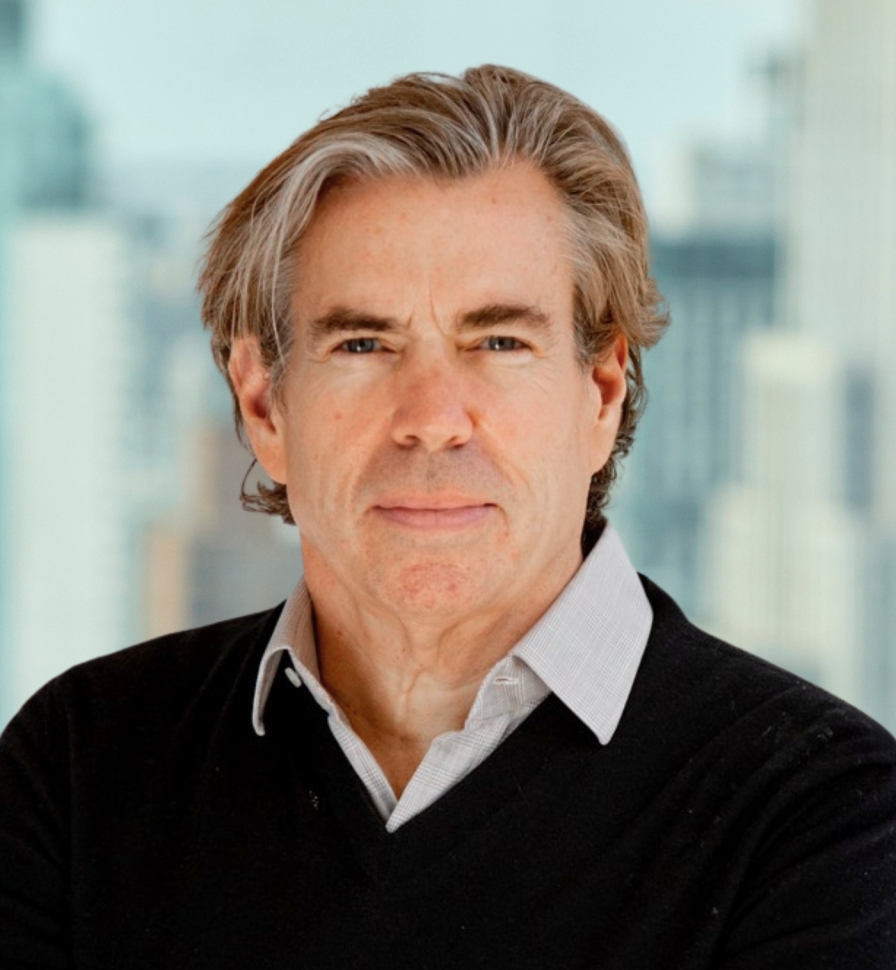Transcripts

Erik: Joining me now is Robert Kahn, who's the Managing Director of Geo-Economics for Eurasia Group. Robert, it's great to have you on the show as a first-time guest. Needless to say, there's no shortage of geopolitical topics for us to discuss. Let's start with President Trump 2.0, I think a lot of markets are discounting the idea that, boy, when President Trump comes in and does all the things he says he's going to do, it's going to be great for markets. I think there's another view, which is there's a few folks in Washington that are pretty threatened by President Trump and are probably going to do everything they can to sabotage him. So, what does this really mean for the outlook for markets?
Robert: Well, Erik, thank you for having me on. And you're right to start with Trump 2.0, I think you're right to raise the question the way you did. I think we are on the cusp of what might be an extraordinarily transformational period for the US economy. I think the markets are likely too sanguine, underestimating how disruptive the Trump policies that are going to likely be put in place over the next few years are going to be. There's both upsides and downsides to these policies. The first thing I always emphasize is the high degree of uncertainty that we're dealing with right now, part of that is Trump's own decision making style. He can be volatile. He can change his mind. He can override his advisors in ways that even his advisors don't know or don't well predict. So, we certainly have a degree of Trumpian uncertainty, if you will, that we're dealing with. But that said, market pricing, particularly over the period since the election, has leaned towards being quite sanguine about what's to come. And I think there's a number of factors for that. Certainly, part of that seems to be that there's a lot of confidence that the economic advisors that President elect Trump has picked will act as guardrails to bad policy decisions and buffer him from maybe some of his worst impulses, or other advisors. I think that can be overestimated in a chaotic decision making environment with a lot of different voices in the room. I do think that there is also a view out there that the threats, particularly on tariffs, that President elect Trump makes, are more for leverage than for actual implementation that the President recognizes that the US has a lot of leverage in these negotiations, a lot of influence and power. And look, it's the best way to get people to the table, and to make concessions is to threaten the use of tariffs, and he likes to do that. Certainly, I think in the recent threats to Mexico and Canada, that was an element. And indeed, I think he will get some concessions from trading partners that do not want a trade war with the US. So, in some sense, that's part of the upside. So, it's not without merit, and the markets are anticipating that, but mistakes can be made. In many cases, I think the President will want to put tariffs in place. I mean, if you can go back and look at his statements going back to the mid-1980s, he has a strong protectionist streak. I think he feels like the US has cheated on trade and that he needs to finish the job he started in his first term. So, my expectation is that tariffs are going to go up quite a bit over the course of the next four years. In the first year alone, I wouldn't be surprised to see tariffs against China double to around 25%, in that range, 23%-25%, I wouldn't be surprised to see tariffs coming on Mexico and Canada at some point on other major trading partners, particularly those with bilateral trade surpluses against the US countries in Southeast Asia, for example. And when you put that all together, this is a tariff increase that we really haven't seen in almost 100 years. It will be disruptive. It's a major change in the trading environment. Will have knock on effects to other countries as well.

Erik: Joining me now is Rosenberg Research founder, David Rosenberg, David, the last time I had you on the show, you and I were both very skeptical of this seemingly endless stock market rally. You just penned a piece called Lament of a Bear. Give us a summary of what that piece is about and what your current perspective is on this market.
David: Well, thanks for having me on the call. Lament of a Bear was just doing, I think, what any analyst or strategist or economist should do at the end of a year where, for the second year in a row, the stock market just pulled a major upside surprise. I'm really not alone, when you think about it, that the consensus on the S&P500 this time last year, for the end of this year, was 4800, and here we are, well north of 6000. And the point that I was making in my piece, and it was really an exercise of putting myself in the shoes of a bull and understanding and trying to appreciate what the other side of the debate is, and what the stock market is really telling us, because the stock market, we could say, well, it's crazy, it's stupid. The valuations are insane. But I'm not going to say the stock market always gets the story right, but it is a broad and liquid market and collective positioning by 1000s, if not hundreds of 1000s of participants, and they're not stupid. So, it was an exercise in really trying to more deeply understand what the message is, and maybe tipping the hat to the bulls instead of arguing and calling it a bubble every single day in my missives, and it may still be a bubble, but I think at the margin, what changed for me was, well, maybe it's not a bubble. And by that, I mean we're spending so much time looking at valuation metrics in the classical sense of 12-month trailing P multiples, 12-month forward multiples. And of course, when you look at the multiples on a one-year forward basis of ‘22 to ’23, you're in the top 5% valuations of all time. But we have to consider that the stock market is a long duration animal, and there are times when perhaps the one-year trailing or forward multiples are not the most appropriate way to assess or value the market, and we have to come to the conclusion that the market is telling us that the generative AI craze is something that's very close to what the internet did back in the 1990s. And of course, you date the start of the internet mania in 1995 when Netscape went public, and it went from a bull market to a raging bull market to a mania, and then to a bubble that inevitably burst, as all bubbles do. It did take five years for that to happen, and if you were there in 1997 and ‘98 and even in a ‘99 yelling bubble, bubble, bubble doesn't matter, the market still ripped in your face, inevitably, there was a day of reckoning that came down the road. I think that what's happening this time around, is very similar in the sense that the market is taking a longer time horizon. If you build an assumption that AI is a major inflection point in the technology curve, that we've had a real model shift in this sense. And I think that you can say that, yeah, it's going to have a major impact. We don't know how it's going to be regulated in the future. Nobody knows really what the total available market is going to be, and so a lot of assumptions are being made, but I think we can say that AI is a game changer. Call it “internet-light,” and that was a game changer, as we all know, and has future positive implications for productivity in particular, and that's important for any investor. Because a fundamental or a secular shift in productivity is going to have a major impact on unit costs in the business sector, and then what that means for corporate profitability in the future.
So, I think that the reason why the stock market, through thick and thin and through good news and bad news in the past couple of years, has continued to march higher is that the stock market has taken on a much longer time horizon than has normally been the case. I know that's going to sound a lot like, well, it's different this time or new era thinking. And I'm saying, well, no, not really. We’ve seen a handful of these technological innovations that really causes a big shift in the technology curve, that then leads to a whole bunch of assumptions on what the future is going to look like in terms of what I just mentioned, productivity growth that leads into profitability. And what is the stock market? After all, the stock market is always operating, not on the here and now, and it's not operating on lagging statistics. The stock market, by definition, is filled with assumptions and expectations about the future, and only in the future do we find out the extent to which the market overpriced, what was going to happen, and that's ultimately how bubbles burst. So, I tip my hat to the view that the market is giving us a very important message about what it believes. And what it believes is that the long term, not 1 year, not 2 years, not 3 years, but 5 years, or 10 years, that AI is going to be a fundamental game changer as far as what it means for the economy. And it's all very positive. Of course, there'll be winners and losers as far as our personal lives are concerned, but in general, the belief that it's going to lead to a lower corporate cost curve is bullish for profits, and not just for the here and now, but for the future. So, I think that what's happened here is that the stock market investor at the margin has lengthened his or her investment time horizon more than it's been the case in the past. And what I missed in this rally, this huge rally, is not appreciating the extent to which AI was going to compel investors to lengthen their investment time horizons as much as it has now. On top of that, we have the Trump victory and major thin majority in the House, majority in the Senate, clean sweep. I don't really believe that Trump is going to get his corporate tax cuts through, because the House is just filled with fiscal conservatives who want to bring the deficit down, but I do think that, and really, this is coming from the Lament of a Bear, we have to make the assertion that Donald Trump, as a standalone event, is bullish for the stock market, because his administration is clearly going to be very business friendly. So, you're taking a look at what my biggest concern was in the lead up to the election the shortly thereafter was, would he boost tariffs, 20% on everybody but China, and 60% on China and engage everybody into a global trade and tariff war. What would the Fed's reaction function to that be? And that had me very concerned for maybe a couple of weeks. And then he put together his economics team, which I would have to say he gets full grades on, and I think especially Scott Bessent, his Treasury Secretary, I'm pretty confident, is going to restrain some of Trump's most damaging impulses, especially when it comes to trade policy. So, I don't think we're going to be getting into a big tariff war. I think that even, as we saw already with the threat for Canada and Mexico, that he was using tariffs as a weapon for border security concerns, it's really being used more as a tactic. So, I'm relieved about that, less concerned about there being a tariff war, and of course, whatever inflationary effects there would be. And we have a president who is going to, even if he doesn't get his tax cuts through, he is going to be deregulating substantially, obviously, very big, important implications for the financial sector and for small business and deregulation, ipso facto, like AI, leads to a lower corporate cost curve. So that's bullish for the stock market, and there's no doubt about that. And on top of that, drill, baby drill, we're going to get a lot more energy production that will lead to lower oil prices, and that will be beneficial for, pretty well every aspect of the economy, especially industries that are heavy users of energy, because it means that their profit margins are going to improve.
I still have not acted on what I'm talking about, because I still think there's a lot of question marks, and I'm concerned about putting the valuations aside, which I had mentioned, we could argue that maybe this is not a bubble, after all, if you're taking a look at the stock market valued on a long term basis, so long as those assumptions that are being embedded, as far as AI is concerned, prove to be appropriate. But we're not going to know that for some time yet, and this stock market clearly is going to be forgiving, but certainly from a public policy standpoint, the Trump victory is clearly positive for the stock market. My concerns, really is, that sentiment is wildly positive, and market positioning is showing that this is a very crowded trade right now to be all in on the S&P 500. So, I have other issues, when I take a look and I see that portfolio managers in the industry, on the equity side, have barely more than 1% cash ratios, I get a little unnerved. You know that? What if something happens that upsets the apple cart? Portfolio managers, institutional portfolio managers, do not have the liquidity, so there could be forced selling. So from a fund flow standpoint, market positioning standpoint and sentiment standpoint, sentiment, every sentiment measure is just off the charts, and I tend to be a contrarian. So even though I was willing to acquiesce and talk about how perhaps the structure of the market's thinking has changed because of AI and the reasons why you could be more bullish because of the Trump victory, there's other things, nagging concerns I have right now, which is why I've written about these things. And I've also said, by the way, you do what you want to do, I haven't really adjusted my portfolio just yet.

Erik: Joining me now is Uranium Insider newsletter editor, Justin Huhn. Justin has prepared a slide deck to accompany today's interview. Registered users will find the download link in your Research Roundup email. If you don't have a Research Roundup email, just go to our home page macrovoices.com, look for the red button above Justin's picture that says looking for the downloads. Justin, I want to start by giving you credit for calling the bottom of this massive uranium correction that we've seen. You were at the WNA conference in London. You literally rushed back at the end of the conference to your hotel room, knowing that the US markets were still open to first panic buy as much uranium shares as you could get, because you knew it was a bottom. And then you made a video late at night from your hotel room in London, saying, guys, this is it, right here, right now, I really think this is a bottom. And you nailed it, was like 40% in a lot of your focus list issues up from there. So congratulations on that call.
Justin: I appreciate that. Thank you. Yeah, it was a very stark contrast experiencing that conference, with the backdrop of the shares continuing to slide and just absolutely horrendous sentiment being expressed on social media. So it was relatively easy, but it was easy because I was at the conference and it was very clear that the market was getting it wrong. I know those are as a dangerous statement to make in the investing world, is that the market is wrong, but you have those moments, every once in a while, where you can clearly see that it is, and I saw that it was, and thought I had to express that. So I appreciate that acknowledgement. Thank you.

Erik: Joining me now is Jeff Currie, Chief Strategist for Energy Pathways at Carlyle. Jeff, it's great to get you back on the show, it's been too long. Let's start with what's going on post the Trump election decision. It seems to me like there's a lot of anomalous pricing in markets, a lot of things are going in directions not everyone expected, including treasuries, particularly. What's driving this is this passive investment versus active investment, as this credit spreads, why does it feel like markets aren't quite doing what everybody expected?
Jeff: Yeah, I think your point, taking it from a really broad perspective here, is it's not just isolated to markets like the credit spreads, or it's not just isolated to equities, where you see 39% of concentration in the top 10 names, or in oil that fails to get a war premium bid. It's in across the entire macro space. So, it's exciting times, lots of opportunities. Let's just go through each one. Let's start, I think, as you pointed out, let's start with treasuries. Those are the markets, I think, where you see much more anomalous pricing. And I think it begins with the credit spreads. You know, you got a situation in which, when you look at US Treasuries sitting there at somewhere around 4.4% right now on the 10-year, versus investment grade running just shy of 5%, we've never seen such tight credit spreads ever, is that an indication that the US is a worse credit than potentially investment grade? I've met people who have made the argument to me, you could see Apple trade through treasuries, or is it, as you point out, being driven by passives out there. You see it in high yield too, that's running somewhere around 7%.
So we're in a very anomalous situation right now. But I think, talking about in the context of the Trump trade, the one thing that fore stepped treasuries was a significant concern around the size of the US deficit, driven around tax cuts and tariffs creating inflationary pressures. That put upward pressure on yields, but that's just part of the story. You got to look at what was going on in the corporates and the tight credit spreads there. The explanation I hear from credit traders is, you had many corporates holding back supply as they waited for rate cuts. Whether or not that's true or not, we'll find out, but I just think, let's put that observation in the context of what's going on in the equity markets. And I think your point about passive investors is also a really critical one. That I'd argue in the post-COVID era has been the biggest shift in markets. We went into COVID with passive investors owning less than 50% of US equity markets, were coming out with passive investors at 60%. The thing that drove that is during the lockdowns, we saw all those checks sent out, and people only had two things, shop online and invest in equities, because fixed income products had a 0% interest rate. And they used these passive ETF vehicles to enter the market, and that's how those percentages got so high. But once they got so high, they crowded out the active investor, and are now the dominant player in at least US equity markets. And that reinforces this idea that big gets bigger, and also most of it's concentrated in the American. And so if it's big and it's American, it's getting bigger, which is why, when you look at concentration, you've got 39% in the top 10 names in the US, which is anomalous. But it doesn't stop there. We can go and we can talk about oil and other markets. I think the key point here is, we're going through a major transition in global markets right now where the marginal buyer is changing, the marginal market is changing. And whether, if it is looking at currency markets, is it gold, or is it in oil? Is it gas and these other markets? So I'd say that the way I'm interpreting all these events is the marginal buyers changing and the marginal market is changing.

Erik: Joining me now is Tressis Chief Economist and fund manager, and of course, best-selling author, Daniel Lacalle. Daniel, it feels to me like maybe the various trades, whether it be dollar north or gold south, the things that happened in reaction to the election of President Elect Donald Trump, feels to me, like maybe those trades are running out of steam. What do you think?
Daniel: I think it's probably run too fast, and we need to at least take a little bit of time to analyze whether the strength of the US dollar is going to continue, and particularly the very complacent view of equities, considering that the earnings season is coming and that there may be some challenges, particularly in the Russell 2000 which has had a phenomenal bounce thanks to the election trade, I understand that there's a strong element of fund flows. I witnessed in different competitors and friends that there was a conscious decision to get into bonds with higher duration, reduce exposure to the United States, increase exposure to Asia and maybe to the Euro area, and that obviously has worked horribly. So, there is certainly a double whammy, right now, happening. On the one side, people are re-balancing their portfolios to an overweight in the United States and reducing those exposures that I just mentioned, and at the same time, the sort of buy in case anyone misses out, the fear of missing out of a very aggressive change in the economy, I don't think we can expect a very aggressive change in the economy, let alone in the earnings profile short term, and therefore we need to be a little bit cautious about that. Maybe the dollar, which has been a huge underweight among investors, is the one that probably has some room to go from where we are today, and we may see some, at least, calming down in the equity and more sort of cyclical stocks.
MACRO VOICES is presented for informational and entertainment purposes only. The information presented in MACRO VOICES should NOT be construed as investment advice. Always consult a licensed investment professional before making important investment decisions. The opinions expressed on MACRO VOICES are those of the participants. MACRO VOICES, its producers, and hosts Erik Townsend and Patrick Ceresna shall NOT be liable for losses resulting from investment decisions based on information or viewpoints presented on MACRO VOICES.
